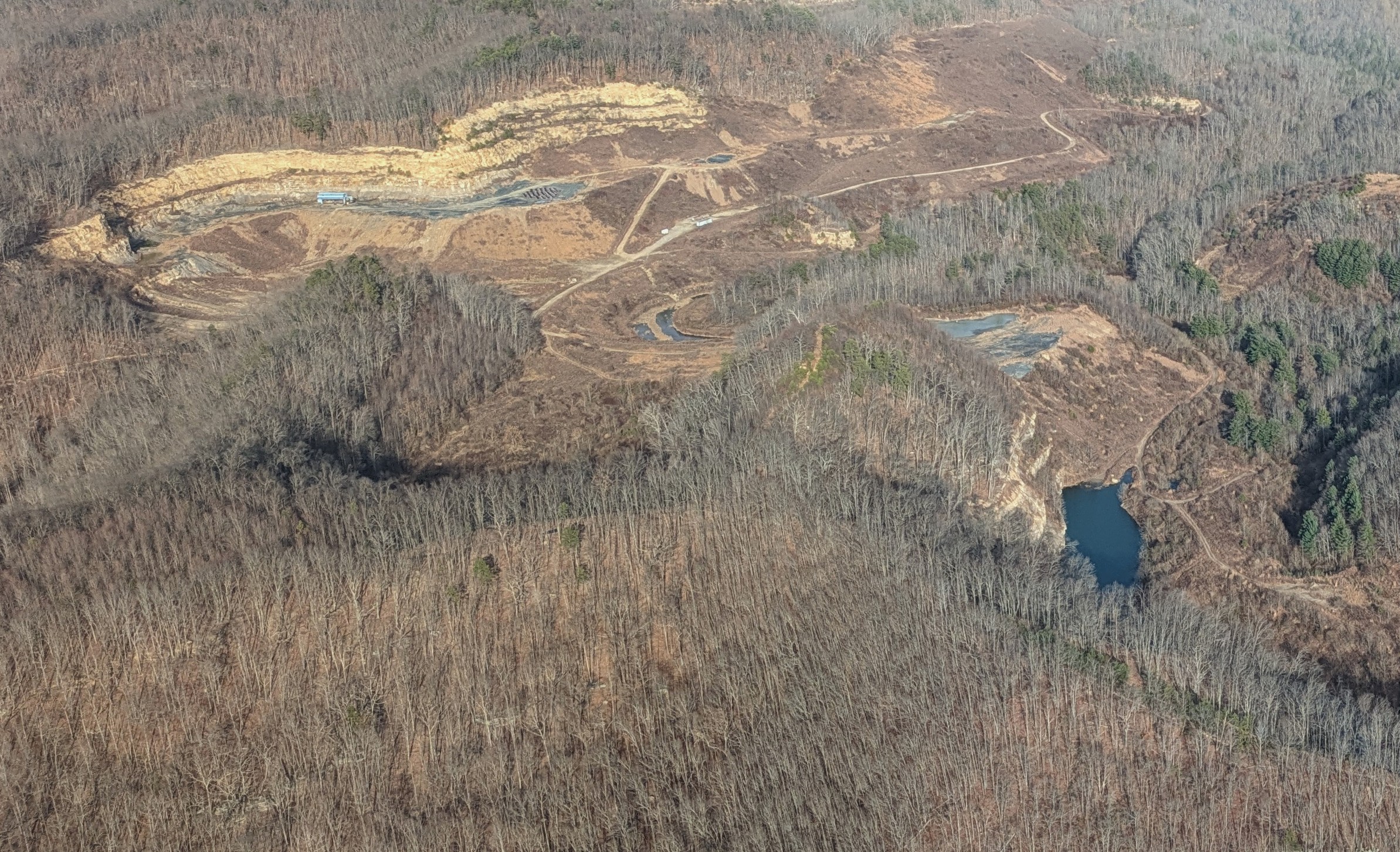Front Porch Blog
by Macey Sheppard
It is no secret that the coal industry has been in decline for years. How many mines are sitting idle while their permit status is still “active?” It may sound contradictory, and well, that is because it is. The Appalachian Citizens’ Law Center recently released a study titled “Functionally Abandoned ‘Active’ Surface Mine Permits in Kentucky” that looked into this issue. The study found that nearly 40% of the “active” surface permits in Kentucky have been sitting idle in the last five years.
In this study, a “functionally abandoned mine” refers to mines that have an active permit status, but have not produced coal since the year 2020 or earlier. ACLC’s Rebecca Shelton and Mary Cromer conducted their study mid-2023 and looked into a total of 126 mines with active permit statuses. They found that 48 of the 126 had not produced any coal for at least three years.
Shelton and Cromer acknowledge that just because a permit is not producing coal may not mean that there is no activity happening. The permit could be in reclamation status. In brief, reclamation refers to cleaning up a mine once the coal is removed to ensure that the environmental hazards are dealt with and the land can be repurposed.
The study found that over 12,000 acres of mined land in Kentucky had remained disturbed over the past four years. The majority of permits in this study had no change to their disturbed acreage over the past four years; half of the permits showed no change over the past six years. Additionally, Shelton and Cromer point out that almost half of the functionally abandoned mines in Kentucky are located in Pike County. Although it is one of the largest counties by area in the state, being home to nearly half of the functionally abandoned mines is alarming for nearby communities.
Not only did the coal companies responsible for those mine permits not produce any coal, they also didn’t make any progress in cleaning up the sites. There is little evidence that these mines are still active in any meaningful sense, despite the fact that regulators are still classifying these permits as “active.”
These functionally abandoned sites can be hazardous. “One significant hazard is highwalls, which are exposed cliffs that are subject to rock falls or the danger of people driving ATVs, for example, over the edge,” said Shelton. “The second issue is that these mines have been sitting idle for years, tying up resources and land in uses that are not benefiting the community economically or environmentally. The state’s failure to push these companies to reclaim the land stalls the region’s ability to use the sites for new beneficial uses.”

Another indicator that reclamation is not taking place is the amount of highwall still present on these permits. The report authors define a highwall as “the cliff of overburden on the mountain above the coal that is exposed to facilitate coal production in certain types of surface mining.” In the state of Kentucky, there are regulations limiting the length of unreclaimed highwall to 1,500 linear feet, and once coal is removed from the area, the company has 60 days to reclaim the highwall. Shelton and Cromer found that 31 out of the 48 permits still had highwall exposed at the site, and only one of the mines had any sort of evidence that reclamation was taking place. These numbers are alarming and show that there seems to be little to no pressure from regulators for immediate reclamation at these permits.
There are 12,000 acres of disturbed land that could be reclaimed to remove environmental and safety hazards — this land could then benefit the surrounding communities. And cleaning up these 12,000 acres will create local jobs and opportunities for former miners to finish the work on these sites.
So, who is responsible for the lack of reclamation? Are there a few coal companies creating a majority of the problem? The results of this study show that this is a problem that involves a major chunk of the coal industry. There were 58 companies associated with the 126 permits the study authors investigated. Of those 58 companies, 25 of them are associated with the functionally abandoned mines. These permits are found across the state’s mining regions, but Pike County is home to 46% of all of the functionally abandoned mine permits in Kentucky.

A functionally abandoned surface mine in Magoffin County, Kentucky, photographed in December 2023. This mine has not produced coal since 2017. Photo by Appalachian Voices
Since this is a widespread problem, state mining regulators must examine the issue and take action. Coal companies are continuing to go bankrupt before they complete the mine reclamation they are responsible for, and sometimes before it has even started. Part of the problem is a lack of consequences for delays in clean up.
Shelton and Cromer make three primary recommendations:
- That state regulators redetermine the bond amount for the functionally abandoned mines. The bonds should be raised to ensure that there is sufficient funding available for the state to reclaim the site if a coal company does not complete the reclamation itself.
- Shelton and Cromer recommend that state regulators examine the permits that have not produced any coal since 2020 and move them into reclamation status. Better enforcement of existing law should prompt these companies to move much faster than they are now. Regulators should be using the full reach of their enforcement to prompt immediate action.
- Lastly, if these permittees do not comply, there need to be consequences. Shelton and Cromer suggest consequences such as the state moving forward with forfeiture proceedings. What this means is that the government will seize the monetary resources of the mining companies in order to fund reclamation.
After conducting their analysis mid-2023, Shelton and Cromer looked into the functionally abandoned mines again in December 2023 to see if any changes were made. About 10% of the permits had moved out of active status into reclamation status. Additionally, they found that Kentucky had implemented a bond forfeiture process on seven of the permits. This means that the seven permits will most likely not be reclaimed by the coal company that holds the permit, and will instead be cleaned up by a third party surety or the state. Although these findings show some effort made to address the idled mine problem, it is still not enough to fully hold coal companies accountable and reclaim the land.
 About the author: Macey Sheppard is the Coal Impacts Team Assistant for Spring 2024. She is located in Wise, Virginia and has a passion for advocacy, the environment and her community.
About the author: Macey Sheppard is the Coal Impacts Team Assistant for Spring 2024. She is located in Wise, Virginia and has a passion for advocacy, the environment and her community.
PREVIOUS
NEXT
Related News

Leave a comment
Your email address will not be published. Required fields are marked *

